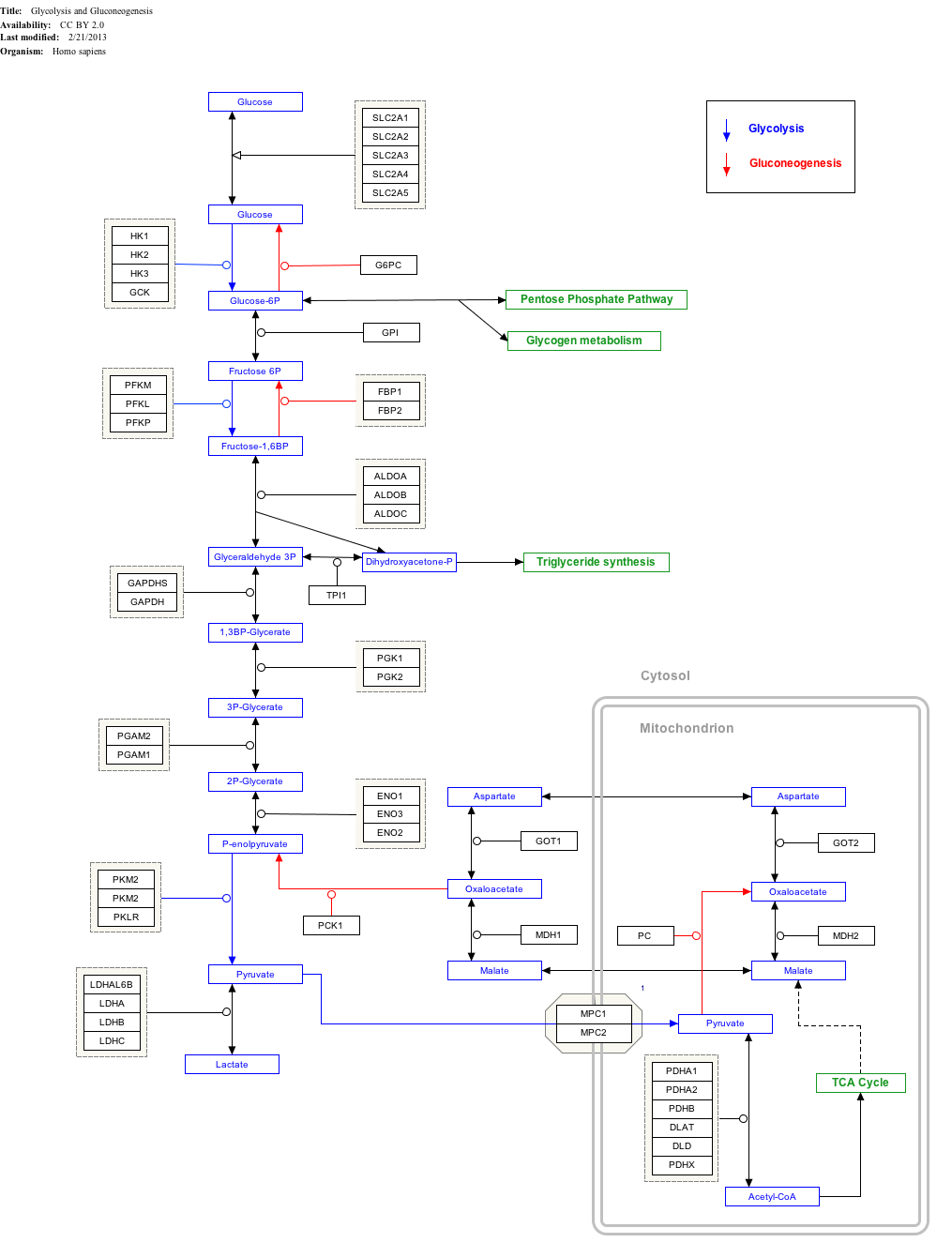Top Qs
Timeline
Chat
Perspective
PFKL
Mammalian protein found in Homo sapiens From Wikipedia, the free encyclopedia
Remove ads
6-phosphofructokinase, liver type (PFKL) is an enzyme that in humans is encoded by the PFKL gene on chromosome 21.[5] This gene encodes the liver (L) isoform of phosphofructokinase-1, an enzyme that catalyzes the conversion of D-fructose 6-phosphate to D-fructose 1,6-bisphosphate, which is a key step in glucose metabolism (glycolysis). This enzyme is a tetramer that may be composed of different subunits encoded by distinct genes in different tissues. Alternative splicing results in multiple transcript variants. [provided by RefSeq, Mar 2014][5]
Remove ads
Structure
Gene
The PFKL mRNA sequence includes 55 nucleotides at the 5' and 515 nucleotides at the 3' noncoding regions, as well as 2,337 nucleotides in the coding region, encoding 779 amino acids. This coding region only shares a 68% similarity between PFKL and the muscle-type PFKM.[6]
Protein
This 80-kDa protein is one of three subunit types that comprise the five tetrameric PFK isozymes. The liver PFK (PFK-5) contains solely PFKL, while the erythrocyte PFK includes five isozymes composed of different combinations of PFKL and the second subunit type, PFKM.[7][8] The muscle isozyme (PFK-1) is composed solely of PFKM.[7][9][10] These subunits evolved from a common prokaryotic ancestor via gene duplication and mutation events. Generally, the N-terminal of the subunits carries out their catalytic activity while the C-terminal contains allosteric ligand binding sites[11]
Remove ads
Function
This gene encodes one of three protein subunits of PFK, which are expressed and combined to form the tetrameric PFK in a tissue-specific manner. As a PFK subunit, PFKL is involved in catalyzing the phosphorylation of fructose 6-phosphate to fructose 1,6-bisphosphate. This irreversible reaction serves as the major rate-limiting step of glycolysis.[7][10][11][12] Notably, knockdown of PFKL has been shown to impair glycolysis and promote metabolism via the pentose phosphate pathway. Moreover, PFKL regulates NADPH oxidase activity through the pentose phosphate pathway and according to NADPH levels.[12]
PFKL has also been detected in leukocytes, kidney, and brain.[9]
Remove ads
Clinical significance
As the erythrocyte PFK is composed of both PFKL and PFKM, this heterogeneic composition is attributed with the differential PFK activity and organ involvement observed in some inherited PFK deficiency states in which myopathy or hemolysis or both can occur, such as glycogenosis type VII (Tarui disease).[7][8]
Overexpression of PFKL has been associated with Down's syndrome (DS) erythrocytes and fibroblasts and attributed with biochemical changes in PFK that enhance its glycolytic function. Moreover, the PFKL gene maps to the triplicated region of chromosome 21 responsible for DS, indicating that this gene, too, has been triplicated.[13]
Interactive pathway map
Click on genes, proteins and metabolites below to link to respective articles.[§ 1]
Glycolysis and Gluconeogenesis edit
- The interactive pathway map can be edited at WikiPathways: "GlycolysisGluconeogenesis_WP534".
Remove ads
See also
References
Further reading
Wikiwand - on
Seamless Wikipedia browsing. On steroids.
Remove ads








